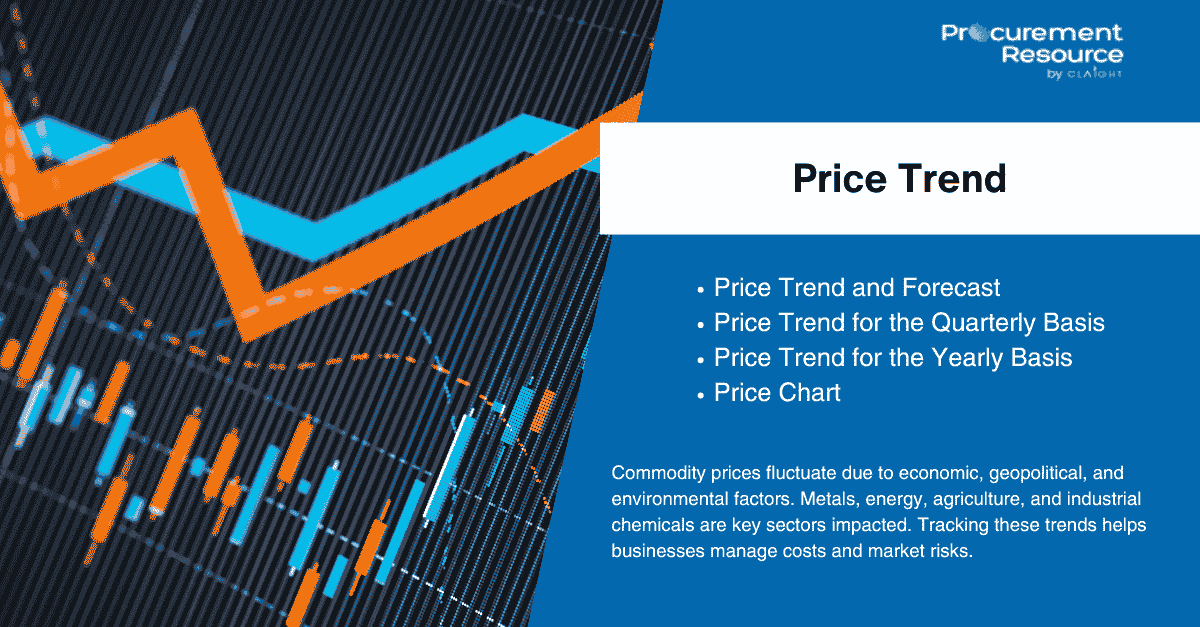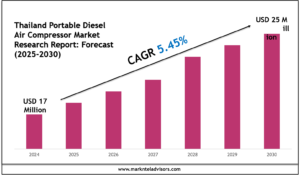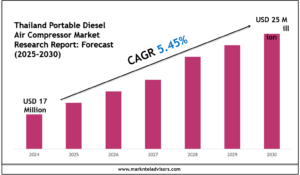Titanium Price Trend: Latest Market Insights, Analysis & Forecast
Titanium is a strategic metal widely used across aerospace, defense, medical, marine, and industrial applications due to its exceptional strength-to-weight...

Titanium is a strategic metal widely used across aerospace, defense, medical, marine, and industrial applications due to its exceptional strength-to-weight ratio, corrosion resistance, and biocompatibility. Monitoring the Titanium Price Trend is essential for procurement teams, manufacturers, and supply chain strategists to ensure cost-effective sourcing, manage risk exposure, and secure long-term supply.
The global titanium market is evolving rapidly, influenced by macroeconomic developments, demand-supply imbalances, geopolitical tensions, and technological advancements. This article offers in-depth insights into the latest titanium price updates, historical data, market forecasts, and region-wise analysis.
Latest Titanium Price Updates & News
In recent months, the titanium market has experienced significant shifts, driven by:
- Surging demand in aerospace and defense sectors as commercial air travel and military spending rebound.
- Geopolitical instability, particularly the ongoing restrictions on titanium exports from Russia—a leading global supplier.
- Supply chain bottlenecks in raw materials such as titanium sponge and feedstock ores like ilmenite and rutile.
- Increased investments in lightweight materials for electric vehicles (EVs) and green energy infrastructure.
Global titanium prices have shown upward pressure due to constrained supply and elevated demand, particularly in the U.S., Europe, and Asia-Pacific markets. The titanium scrap market has also tightened, driving costs higher for recycled titanium alloy production.
Market Analysis: Factors Influencing the Titanium Price Trend
1. Raw Material Availability
Titanium is typically extracted from rutile, ilmenite, and titanium slag. Fluctuations in the availability and pricing of these raw materials heavily impact titanium production costs. Disruptions in major mining regions like Australia, South Africa, and India contribute to price volatility.
2. Energy & Processing Costs
The production of titanium metal—especially through the Kroll process—is highly energy-intensive. Rising electricity and fuel prices significantly influence the cost of titanium sponge and ingot manufacturing, which in turn affects overall market pricing.
3. Global Trade Policies & Sanctions
Sanctions on Russia, a dominant exporter of titanium products (including sponge and mill products), have disrupted global supply chains. Western aerospace companies are actively diversifying their supplier base, which has introduced cost premiums in new contracts.
4. Aerospace & Defense Demand
Titanium demand is closely tied to the aerospace industry due to its use in airframes, jet engines, and structural components. The recovery of the aviation industry and new aircraft programs by Airbus and Boeing are intensifying global titanium consumption.
5. Medical & Industrial Uses
The medical implant, dental, and chemical processing industries are also significant end-users. The rising number of orthopedic surgeries and expansion of the biocompatible material segment continue to elevate titanium demand.
Historical Data & Forecasts
Titanium pricing has shown notable historical fluctuations based on industrial activity and supply chain dynamics:
- Prices remained relatively steady, supported by balanced aerospace production and stable ore supply.
- Pandemic-driven downturn in air travel led to decreased titanium demand, briefly softening prices.
- Prices surged due to rising aerospace demand and geopolitical constraints on Russian titanium exports.
- Market analysts predict continued price strength, driven by structural demand in defense and EV sectors, with moderate volatility tied to raw material accessibility.
Procurement Resource provides detailed Titanium price forecasts, integrating historical price charts, macroeconomic indicators, and raw material trends to help stakeholders plan efficiently.
Titanium Pricing Database & Chart Tools
Accurate pricing data is critical for contract negotiation, inventory planning, and budget forecasting. A comprehensive Titanium pricing database includes:
- Spot and contract titanium prices
- Grade-wise pricing (CP Titanium, Ti-6Al-4V, etc.)
- Import/export price indices
- Historical charts & cost driver breakdowns
- Benchmark comparisons by region and supplier
Interactive titanium price trend charts are useful for visualizing cost cycles, tracking seasonal or geopolitical impacts, and analyzing long-term procurement performance.
Regional Insights & Analysis
Asia-Pacific
China dominates the global titanium supply chain, producing over 50% of the world’s titanium sponge and downstream products. Domestic policies, export controls, and energy rationing significantly affect global price movement. Japan and India are also key players with expanding industrial demand.
North America
The United States has increased focus on domestic titanium production to reduce dependence on foreign suppliers, especially in defense and aerospace. High R&D investment and defense procurement are pushing demand. Titanium recycling is also a growing segment due to its cost benefits.
Europe
European titanium buyers face high prices due to limited local production and restricted Russian imports. Demand remains high in the aerospace sector, and the European Union’s push for material self-reliance is encouraging investment in regional capacity and scrap recycling.
Middle East & Africa
These regions are emerging as new titanium sourcing hubs due to investments in ilmenite and rutile mining. However, limited processing capacity and infrastructure challenges still restrict price competitiveness.
Market Insights: Emerging Trends & Strategic Outlook
Recycling and Circular Titanium Economy
The growing importance of titanium scrap recycling—particularly in the aerospace sector—is transforming market dynamics. Titanium recycling reduces energy consumption and mitigates supply risks, providing a sustainable alternative for manufacturers.
Advanced Manufacturing Technologies
Additive manufacturing (3D printing) using titanium powders is gaining traction in medical implants and aerospace components. This segment is expected to significantly impact titanium powder pricing and shift traditional supply chains.
Strategic Stockpiling
Governments and large corporations are increasingly stockpiling critical materials, including titanium, to safeguard against geopolitical risks. These actions can create temporary supply squeezes and drive prices upward.
Green Energy & Lightweight Materials
Titanium is increasingly used in offshore wind components, hydrogen storage, and battery components due to its strength, corrosion resistance, and durability—further expanding market applications beyond aerospace and defense.
The Role of Procurement Resource in Titanium Market Strategy
Navigating the titanium market requires real-time data, deep industry insight, and robust cost modeling. Procurement Resource supports procurement teams with:
- Real-time and historical Titanium price trend reports
- In-depth supplier analysis and sourcing strategies
- Custom cost breakdowns for grade-specific titanium products
- Price forecasting models and risk assessment frameworks
With Procurement Resource’s market intelligence tools, organizations gain a strategic edge in managing volatility and securing long-term supply at optimized prices.
Why Tracking the Titanium Price Trend Matters
The Titanium Price Trend is not just an indicator of raw material costs—it reflects underlying shifts in global trade, technology, and industrial policy. For aerospace manufacturers, medical suppliers, chemical processors, and defense contractors, staying ahead of pricing changes is essential for maintaining competitive advantage and supply chain resilience.
From feedstock cost tracking to strategic sourcing, businesses that actively monitor titanium market behavior can unlock cost efficiencies and reduce exposure to unforeseen risks.
Request for the Real-Time Prices : https://www.procurementresource.com/resource-center/titanium-price-trends/pricerequest
Contact Information
Company Name: Procurement Resource
Contact Person: Ashish Sharma (Sales Representative)
Email: sales@procurementresource.com
Location: 30 North Gould Street, Sheridan, WY 82801, USA
Phone:
UK: +44 7537171117
USA: +1 307 363 1045
Asia-Pacific (APAC): +91 1203185500







